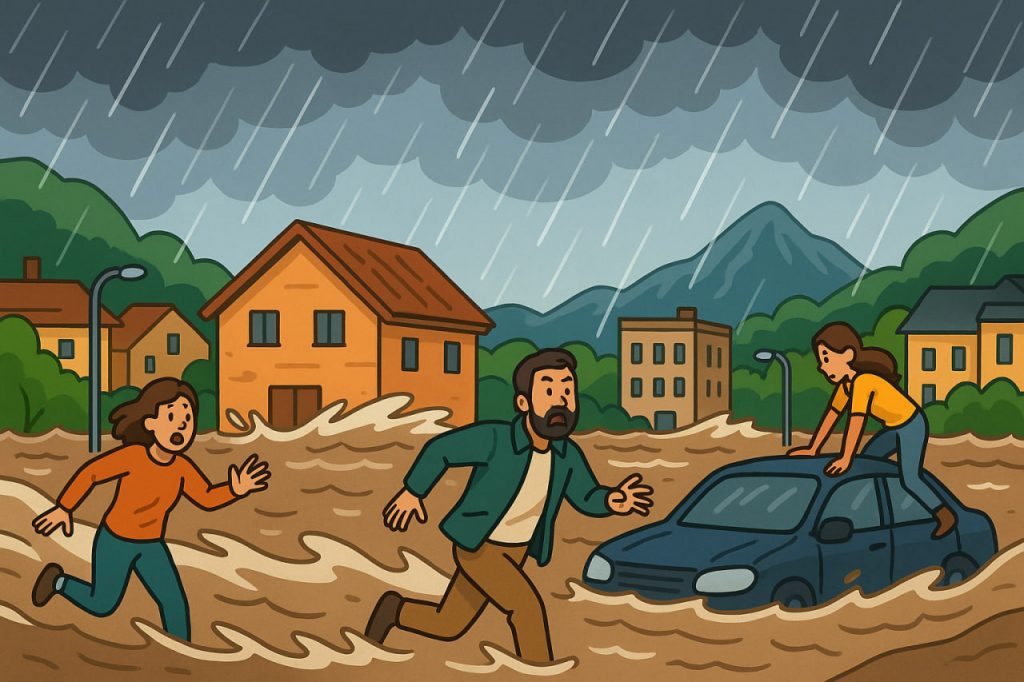Floods are among the most devastating natural disasters, capable of reshaping landscapes, damaging infrastructure, and endangering human lives. While some floods build up slowly over time, others strike with terrifying speed. These are known as flash floods — sudden, powerful surges of water that can occur with little or no warning. Understanding the potential suddenness of floods is crucial for preparedness and survival.
What Causes Sudden Floods?
Flash floods typically occur when a large volume of rain falls in a short period, overwhelming the capacity of soil, rivers, and drainage systems. Common triggers include:
- Heavy rainfall during thunderstorms
- Dam or levee failures
- Rapid snowmelt
- Landslides blocking rivers that later burst
Urban areas are especially vulnerable due to impermeable surfaces like asphalt, which prevent water from being absorbed.
How Fast Can Floods Occur?
Some flash floods develop within minutes of intense rainfall, particularly in mountainous or arid regions. Water from higher elevations funnels into valleys and dry riverbeds, creating sudden torrents. In such cases, residents may have less than 15 minutes to react.
Real-Life Examples of Sudden Floods
1. Rapid Flooding in Derna, Libya (2023)
When two dams collapsed after a major storm, an enormous wall of water swept through the city of Derna in eastern Libya. Entire neighborhoods were destroyed in a matter of minutes, and thousands lost their lives.
2. Ellicott City, Maryland, USA (2018)
A historic American town suffered two devastating flash floods within two years. In both cases, torrential rain caused a sudden rise in river levels, with cars floating down streets and buildings heavily damaged. The floods came with little time for evacuation.
3. Uttarakhand, India (2013)
Extreme rainfall in the Himalayan region triggered flash floods and landslides. The water destroyed homes and swept away roads and villages with frightening speed, leaving over 5,000 people dead or missing.
4. Krasnodar Krai, Russia (2012)
Sudden night-time flooding hit the town of Krymsk after torrential rains. Residents were caught off guard while sleeping. Over 170 people died, and questions were raised about delayed warnings.
Why Flash Floods Are So Dangerous
- Limited time to respond – people are often caught unaware
- Strong, fast-moving water can carry away cars, people, and buildings
- Night-time events reduce visibility and escape opportunities
- False sense of safety in areas with no recent flood history
How to Protect Yourself
- Monitor weather alerts and have emergency plans ready
- Avoid walking or driving through flooded areas
- Recognize natural flood zones like valleys or dry creeks
- Stay informed during storm seasons or heavy rains
- Pack an emergency backpack or suitcase according to the rescue service’s recommendations
Glossary
- Flash flood: A sudden, intense flood usually caused by heavy rain or dam failure.
- Drainage system: Infrastructure that carries rainwater away from urban areas.
- Landslide: A sudden fall of a mass of earth or rock from a mountain or cliff.
- Torrential rain: Extremely heavy rain in a short period.
- Levee: An embankment built to prevent river flooding.


